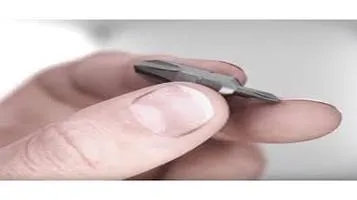Kneeling Pad Comfort Meets Practicality
A kneeling pad is a versatile and ergonomic accessory designed to provide comfort and support for individuals who spend extended periods kneeling on hard surfaces. Typically made from high-density foam or gel materials, these pads offer a cushioned barrier between the knees and the ground, reducing pressure and minimizing discomfort. They are commonly used in gardening, household chores, construction, and various DIY projects. The compact and lightweight design makes them easy to carry and store, while a water-resistant or washable cover ensures durability and ease of cleaning. Some kneeling pads come with added features like handles for easy transport or a textured, non-slip surface for enhanced stability. Ideal for protecting knees from strain and injury, kneeling pads are a practical tool for anyone seeking comfort during tasks that require kneeling.

In today's fast-paced world, where multitasking is the norm, finding products that offer both functionality and comfort is a rare delight. A kneeling pad is one such product that has garnered attention for its ability to provide relief and support during various activities, from gardening to household chores. This review delves into the features, benefits, and potential drawbacks of a typical kneeling pad to help you decide if it's a worthwhile addition to your toolkit.
Design and Build Quality
The first aspect that strikes you about a kneeling pad is its design. Most kneeling pads are constructed from high-density foam, which provides a perfect balance between softness and durability. The foam is often encased in a water-resistant outer layer, making it suitable for both indoor and outdoor use. The size of the pad generally measures around 18 x 11 inches, which is ample space for most adults to kneel comfortably.
The thickness of the pad is another crucial factor. A good kneeling pad usually has a thickness of about 1.5 to 2 inches. This thickness ensures that your knees are cushioned from hard and uneven surfaces, reducing the risk of discomfort or injury. Additionally, the pad often features a textured surface to prevent slipping, providing a stable base for any activity.
Comfort and Support
Comfort is the primary reason anyone would invest in a kneeling pad, and this product does not disappoint. The high-density foam conforms to the shape of your knees, distributing your weight evenly and reducing the pressure on your joints. This makes it ideal for extended periods of use, whether you’re weeding your garden, scrubbing floors, or even doing some DIY projects.
Moreover, the pad’s ability to retain its shape over time is commendable. Unlike cheaper alternatives that may flatten out with regular use, a high-quality kneeling pad maintains its cushioning effect, providing consistent support. This durability makes it a cost-effective choice in the long run.
Versatility
One of the standout features of a kneeling pad is its versatility. While it is commonly associated with gardening, its utility extends far beyond. Here are a few scenarios where a kneeling pad proves invaluable:
- Gardening: Protects your knees from damp soil, sharp stones, and thorny plants.
- Household Chores: Makes tasks like scrubbing floors or cleaning baseboards more comfortable.
- DIY Projects: Provides a cushioned surface for activities like painting or assembling furniture.
- Exercise: Can be used as a mat for yoga or other exercises that require knee support.
- Outdoor Activities: Ideal for camping or picnicking, offering a comfortable place to kneel or sit.
Portability
Another significant advantage of a kneeling pad is its portability. Many models come with a built-in handle, making it easy to carry around. The lightweight design ensures that you can move it from one task to another without any hassle. Some pads are even foldable, allowing for compact storage when not in use.
Easy Maintenance
Maintenance is often a concern when it comes to products that are used outdoors or in messy environments. Fortunately, a good kneeling pad is easy to clean. The water-resistant outer layer can be wiped down with a damp cloth, and in some cases, the cover may be removable and machine washable. This ease of maintenance ensures that your kneeling pad remains hygienic and in good condition for a long time.
Potential Drawbacks
While a kneeling pad offers numerous benefits, it’s essential to consider potential drawbacks. One issue that some users face is the pad’s size. Although the standard dimensions are sufficient for most people, individuals with larger frames may find it a bit restrictive. In such cases, looking for an oversized model might be advisable.
Another point to consider is the density of the foam. While high-density foam provides excellent support, it may feel too firm for some users. If you prefer a softer cushioning effect, you might want to explore pads with memory foam or gel inserts.
Lastly, while the water-resistant feature is beneficial, it’s not entirely waterproof. Prolonged exposure to water can still seep into the foam, potentially causing damage over time. Therefore, it’s advisable to store the pad in a dry place when not in use.
Conclusion
In summary, a kneeling pad is a versatile and practical accessory that offers significant comfort and support for a variety of tasks. Its high-density foam construction, easy portability, and low maintenance make it a valuable addition to any household. While it may have a few minor drawbacks, the benefits far outweigh them, making it a worthy investment for anyone looking to protect their knees and enhance their overall comfort during various activities.
Whether you're an avid gardener, a DIY enthusiast, or someone who values comfort during household chores, a kneeling pad is a small yet impactful product that can make a big difference in your daily routine. So, if you’re on the fence about getting one, take the plunge—you won’t regret it.






